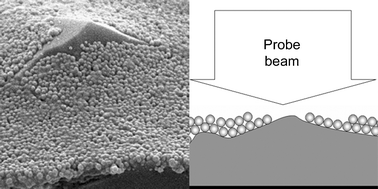Assembly and characterization of colloid-based antireflective coatings on multicrystalline silicon solar cells
Abstract

* Corresponding authors
a
Department of Chemical and Biomolecular Engineering, North Carolina State University, Raleigh, NC
E-mail:
odvelev@unity.ncsu.edu
Fax: +1 (1)919 513 4365
Tel: +1 (1)919 513 4318

 Please wait while we load your content...
Something went wrong. Try again?
Please wait while we load your content...
Something went wrong. Try again?
B. G. Prevo, E. W. Hon and O. D. Velev, J. Mater. Chem., 2007, 17, 791 DOI: 10.1039/B612734G
To request permission to reproduce material from this article, please go to the Copyright Clearance Center request page.
If you are an author contributing to an RSC publication, you do not need to request permission provided correct acknowledgement is given.
If you are the author of this article, you do not need to request permission to reproduce figures and diagrams provided correct acknowledgement is given. If you want to reproduce the whole article in a third-party publication (excluding your thesis/dissertation for which permission is not required) please go to the Copyright Clearance Center request page.
Read more about how to correctly acknowledge RSC content.
 Fetching data from CrossRef.
Fetching data from CrossRef.
This may take some time to load.
Loading related content
